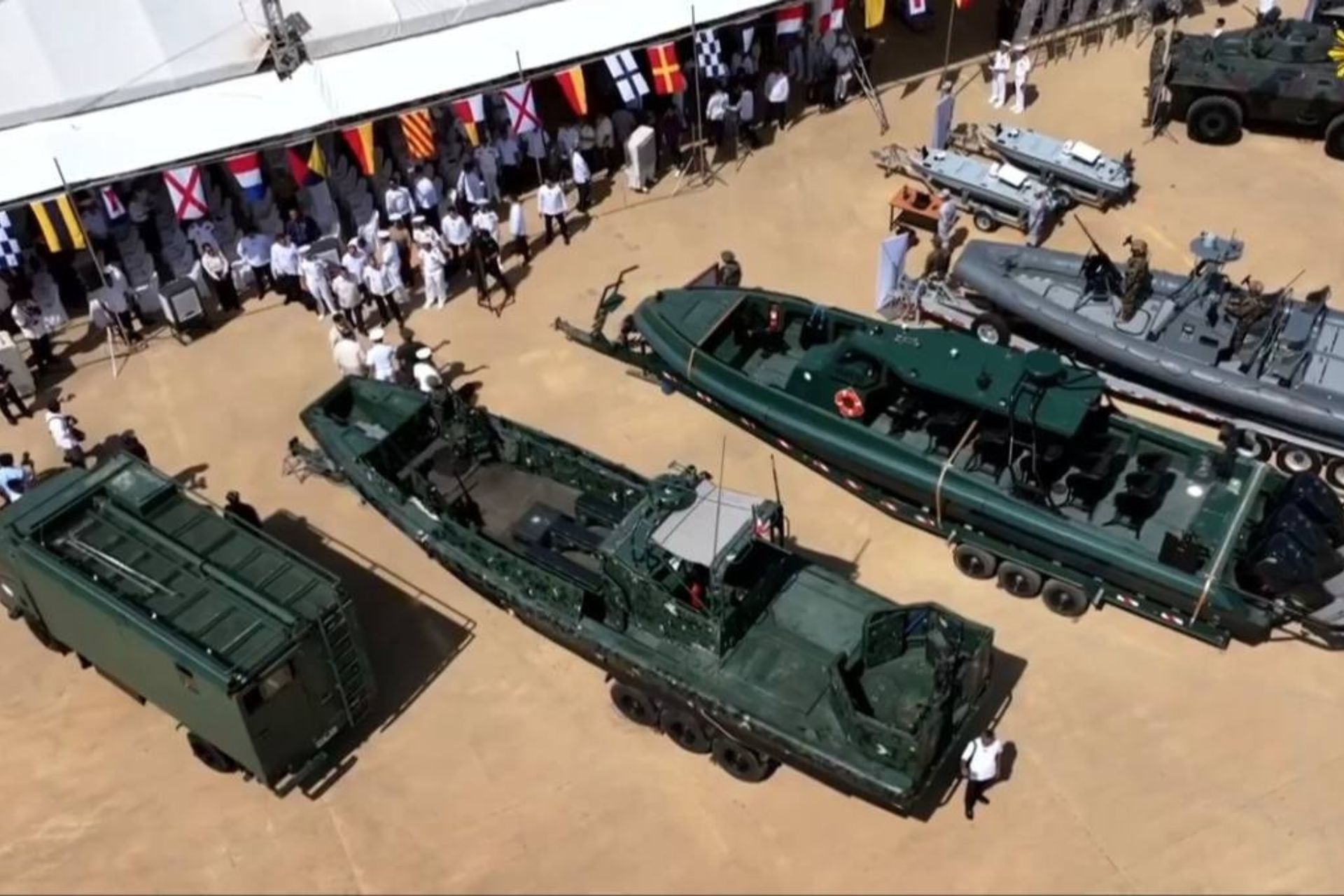Breaking News
How US Cooperation Is Shaping the Philippine Navy’s Doctrine.
On the occasion of its 127th founding anniversary, the Philippine Navy presented a broad overview of its expanding capabilities in small craft operations, reflecting the continuous evolution of its light fleet amid the growing importance of coastal and riverine missions. The event served as a significant display, offering the public and institutional partners a rare glimpse of various operational assets from different naval units. It also highlighted the blend of strategic international partnerships and the development of locally adapted maritime solutions that address the specific geographic challenges of the Philippine archipelago.

The demonstration held during the Philippine Navy’s 127th anniversary showcased a complete range of small craft, unmanned maritime systems, and tactical ground vehicles, reflecting the continuous modernization of the country’s armed forces (Picture source: Philippine President)
Among the equipment showcased were two MANTAS T-12 unmanned surface vehicles (USVs), developed by the U.S.-based company MARTAC. These autonomous systems are operated by the Philippine Fleet’s Unmanned Surface Vessel Unit (USVU) and were delivered through the United States Foreign Military Sales (FMS) program. The units were exhibited equipped with a FLIR electro-optical/infrared (EO/IR) system and a Starlink terminal antenna, enabling remote control and real-time data transmission. Designed for maritime surveillance, these surface drones also serve as a training platform for Philippine operators before progressing to more complex USV systems.
The MANTAS T-12 is a 3.6-meter unmanned surface vehicle optimized for operations in littoral environments. Powered by a fully electric propulsion system, it is capable of exceeding speeds of 30 knots while carrying a payload of up to 64 kilograms. Its modular design allows for deployment from shore, motherships, or other platforms. It is distinguished by its low acoustic and thermal signature, and its ability to integrate a range of sensors—including EO/IR cameras, sonars, lidars, and acoustic modems—enabling it to perform a variety of missions. An optional low-profile “gator” configuration allows the deck to sit flush with the waterline, enhancing its ability to conduct stealth-oriented reconnaissance or observation tasks.
The MANTAS T-12 is employed in missions such as surveillance, search and rescue, mine countermeasures, and electronic warfare. Though not armed by default, its modularity allows for the integration of mission-specific systems depending on operational requirements. Its proven reliability, demonstrated through thousands of hours of active service, makes it a suitable platform for conducting tasks considered too hazardous, repetitive, or high-risk for human operators.
Other assets on display included an 11-meter rigid-hull inflatable boat (RHIB) used by the Naval Special Operations Command, representing the versatility and responsiveness of the Navy’s special intervention units. These RHIBs, which exist in several configurations within the Philippine fleet, are designed for missions such as boarding operations, maritime counter-terrorism, and coastal assault. Although their exact origin has not been confirmed, they are also likely to have been acquired from the United States, in line with continued bilateral security cooperation.
The Philippine Marine Corps presented two additional types of platforms: the Patrol Craft Coastal (PCC) and the Patrol Craft Riverine (PRC), the latter also known by its U.S. designation, Small Unit Riverine Craft (SURC). The PCC is a lightweight vessel designed for operations in littoral zones, especially in complex maritime environments such as the tri-border area shared by the Philippines, Malaysia, and Indonesia. These craft support joint patrol operations involving the Philippine Navy and Coast Guard. Sixteen units have been locally produced by Safehull Technologies and Propmech Corporation using fiberglass composite materials tailored to the operational demands of the country’s archipelagic waters.
The PRC/SURC, intended for both riverine and coastal operations, is a 40-foot vessel designed by U.S.-based Silver Ships Inc. and acquired by the Philippines in 2013 through the FMS program. These platforms are essential for enabling rapid deployment of Marine forces into hard-to-reach areas, including rivers and semi-urban or swamp regions. Their robust design and operational flexibility make them key assets for securing inland waterways.
Complementing the naval assets, the display also featured wheeled armored vehicles, including the Cadillac Gage Commando V-150 and V-300, as well as an unidentified command vehicle. Their presence illustrates the Philippine Navy’s joint-force approach, integrating ground capabilities into its maritime and internal security operations to respond to hybrid and asymmetric threats.
The demonstration held during the Philippine Navy’s 127th anniversary showcased a complete range of small craft, unmanned maritime systems, and tactical ground vehicles, reflecting the continuous modernization of the country’s armed forces. By combining domestic production with strategic acquisitions from foreign partners, particularly the United States, the Navy is enhancing its operational posture across complex maritime and inland environments. The event underscores both a growing pursuit of technological autonomy and a pragmatic orientation toward emerging geopolitical and security challenges.


























